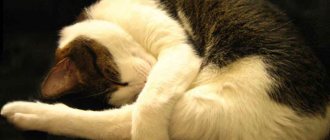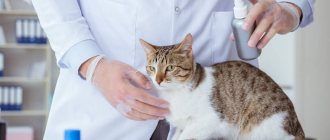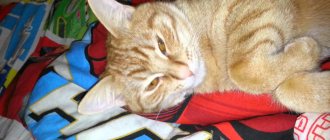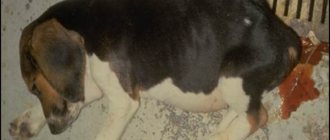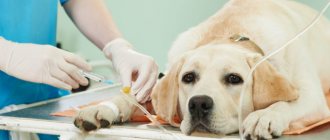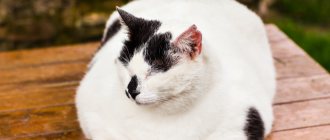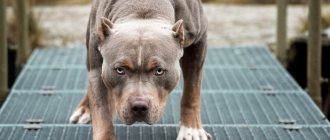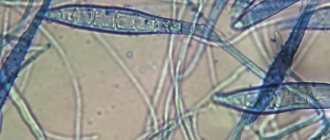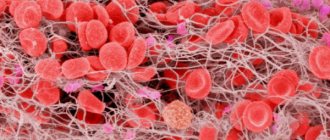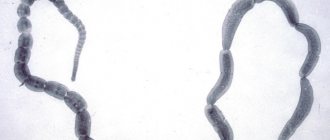Causes
The relevance of treatment at home depends on the causes of the disease, since proper nutrition is not a “panacea” . Diarrhea in a kitten is quite expected, especially if it was picked up on the street and started to be fed well. If the animal was starving and suddenly gained free access to food. It is also important that diarrhea can be caused by a theoretically correct, but inappropriate diet.
When foods that are spoiled or unnatural , diarrhea is a natural reaction. In this case, abruptly stopping it with medication will only harm the animal. Food allergies can also cause diarrhea, but in this case treatment is necessary. With prolonged loss of large amounts of fluid, the cat will develop dehydration, and this is an extremely dangerous condition. Naturally, in case of allergies, it is necessary not only to treat diarrhea, but also to change the animal’s diet.
Worm infestation leads to many unpleasant consequences; diarrhea and vomiting are the most harmless. In most cases, kittens picked up on the street have worms. The treatment is safe from the 2nd month of life, and before that only paralyzing suspensions are used. Adult cats need to be treated regularly, once every 3 months or every six months. Even if your pet does not go outside, it can pick up parasites that you brought into the house on your hands, food, clothes, etc.
Diarrhea can be caused by constipation , no, this is not a mistake; many inexperienced owners confuse the mucus secreted during constipation with loose stool. The yellow color of the feces indicates indigestion, while the green color indicates rotting. If in the first case observation and home treatment are appropriate, then in the second you need to be vigilant. Bloody diarrhea may indicate an ulcer, chronic bowel disease, or damage to the bowel. Orange color or its absence indicates problems with the liver; in the first case there is a lot of bile in the feces, in the second there is very little.
Many viral diseases are accompanied by profuse diarrhea. Naturally, in addition to this, a number of other symptoms appear, but cat distemper usually begins with malaise and diarrhea, the progression of adenoviruses and other deadly ailments.
With bacterial infection, diarrhea develops due to a large amount of toxins that mechanically irritate the intestines. In the process of the body’s fight against any harmful agents, both diseases and leukocytes die, so diarrhea can be a sign of normal, protective activity of the body.
Main reasons
In order to solve the problem of frequent loose stools in a nursing cat as quickly as possible, you need to identify the cause and eliminate it first.
Diarrhea is a disorder of the gastrointestinal tract caused by excessive mucus production in the intestines. It is extremely rare that diarrhea is an independent phenomenon; it usually hides various pathologies. Frequent loose stools are caused by pathogenic microflora, viruses, toxic substances, and other things entering the gastrointestinal tract. Thus, the following factors can provoke diarrhea in cats:
- Poor quality, expired or unsuitable food. The diet of a nursing purr must be carefully selected; it is strictly contraindicated to give her fried, fatty, salty and peppery foods. Veterinarians do not advise experimenting with the menu and adding new products immediately after giving birth to a cat. Food unfamiliar to the cat should be given a little later, introduced into the diet gradually.
- Reaction to an allergen. During lactation and gestation, cats often develop allergies to food, vitamins, etc.
- Worm infestation. During the period of feeding the offspring, a cat’s body experiences a huge load, and “freeloaders” will only aggravate the situation, dealing a serious blow to the immune system.
- Entry of a foreign object into the gastrointestinal tract. If sharp objects such as bones are swallowed, there is a risk of damage to the intestinal walls. In this case, diarrhea is accompanied by blood impurities.
With poor quality nutrition, in particular milk, your pet may experience diarrhea.
Veterinarians also identify other reasons why a cat diarrhea during the lactation period. One of them is a viral or infectious lesion, which requires treatment, often incompatible with lactation. In addition, diarrhea in a nursing purr can occur after antibiotics that inhibit the intestinal microflora, as well as from milk given to the owners of lactating cats.
Symptoms and diagnosis
When diagnosing yourself, you need to take into account the maximum number of factors. It is better to write down everything that the cat has eaten over the last 2-3 days and conduct a thorough inspection of the home. Inspecting boxes of thread, counting toys, etc. will help eliminate the risk of swallowing a foreign object. It is important to understand that a foreign object can lead to intestinal blockage.
Self-medication should not be practiced if diarrhea lasts more than 3 days or recurs within a short time after recovery. When visiting the clinic, you need to tell the doctor as accurately as possible about the development of the disease and your actions. For diagnostic purposes, the doctor will examine the four-legged dog, listen to breathing and heartbeat, measure the temperature, and, if necessary, take blood for analysis.
Advice: if you have the opportunity to collect cat feces for analysis before going to the clinic, do so. In most cases, this analysis will be prescribed anyway, but you will waste time.
If equipment is available, the doctor will certainly conduct an ultrasound examination or take an image with a contrast agent. For any problem with the digestive tract, it is advisable to immediately rule out intestinal obstruction. The danger is that if there is an obstruction, the cat must be operated on immediately, and treatment and observation will only worsen the situation.
Diet and treatment at home
If you notice that your cat has severe diarrhea and you are sure that it is not caused by poisoning, you should try to avoid dehydration. Naturally, it is better to consult a doctor who will provide qualified assistance. If this is not possible, but you need to act, there is a universal scheme.
To eliminate a wide range of harmful bacteria, Metronidazole (Trichopol) is used . The drug has side effects and is not recommended for animals suffering from liver disease. If there is blood in the feces (not threads) or the color has turned black, use Dicynone. Carefully monitor the cat's condition and temperature; blood in the stool may indicate internal bleeding, an open ulcer or intestinal perforation - problems that cannot be solved without professional help.
If dehydration has already begun, you need to give subcutaneous drips of glucose, Ringer's solution and saline . The intensity of the activities depends on whether the cat drinks. By the way, if the cat does not drink, self-medication is very dangerous, since the cause of the disease is clearly not diarrhea.
Let us immediately make a reservation that a therapeutic diet for the treatment of diarrhea is relevant if the condition is observed for the first time in a long period , the cat does not have a high temperature and the general health can be assessed as satisfactory. Before deciding on treatment at home, pay attention to the food reaction; you do not need to feed your pet, but you need to make sure that the cat has an appetite.
Ideally, an adult animal should be kept on a fasting diet for 24 hours, and a kitten for up to 12 hours. During this time, the intestines will recover a little. You need to understand that from feeding during this day, the cat will not get enough, but will only fill her stomach. During diarrhea, the intestinal walls secrete a lot of mucus, so the absorption of nutrients from food is negligible.
Important! During a fasting diet, you cannot limit the amount of water.
If you have diarrhea, it is not recommended to feed your pet milk and dairy products. The environment created in curdled milk is very suitable for most bacteria. Simply put, milk will not help the cat, but the microorganisms that attack it. The second prohibition concerns foods that are too nutritious, such as those containing starch and carbohydrates. Digesting heavy, carbohydrate foods for an irritable intestine is an overwhelming problem.
Symptoms of diarrhea
Diarrhea is characterized by general symptoms:
- loose stools;
- frequent bowel movements;
- flatulence;
- blood, mucus and feces.
If diarrhea signals an illness, secondary symptoms may appear:
- decreased or increased appetite;
- weight loss;
- vomit;
- temperature increase;
- decreased pet activity;
- drowsiness.
Secondary symptoms should be addressed as early as possible. To diagnose the disease in time and begin treatment.
Duration
Loose stools in cats can last for varying durations. Sometimes the sudden onset of diarrhea also ends suddenly. During this time, the animal did not change its behavior or appetite. A one-time bowel movement is not a reason to be upset. The manifestation of diarrhea and its continuation for a certain time divided it into certain groups.
- acute – the duration of diarrhea is more than two days;
- chronic – more than 7 days;
- intermittent – up to 30 days.
The first group does not pose a threat to health and is limited to hunger and a decrease in water during the first two days. Apply a diet. Within two days the cat’s body will recover.
The chronic group obliges you to contact a veterinary clinic. Since the cause of the disease should be identified and treatment prescribed.
An intermittent group entails not only illness, but also dehydration, so the animal must be examined.
The cat has black diarrhea
The usual color of cat feces is brown or light brown. But liquid black stool called “melena” signals a problem in the body.
Dark stool in a cat has its own reasons:
- iron supplements have been added to food;
- The pet's menu contains a lot of raw meat or blood meal.
But black diarrhea in a cat without the inclusion of iron supplements in the diet should warn the owner of the danger. If, along with stool upset, the animal refuses to eat, vomits, or has an elevated body temperature, consult a doctor immediately!
Red-black diarrhea indicates bleeding in the gastrointestinal tract.
The list of diseases with such a symptom is long: this can include helminthic infestation, hemorrhagic gastroenteritis, gastritis, colitis, stomach tumor, intestinal tumor, stomach ulcer. If such diseases are suspected, home treatment is unacceptable.
Causes
Diarrhea is caused by the following diseases:
- parasites – diarrhea is characterized by white diarrhea;
- cancer – blood in stool;
- kidney and liver disease - white or orange stool, possibly clogged ducts in the pancreas;
- high blood sugar;
- intestinal obstruction – blood, mucus in the stool;
- fungal bacteria;
- pancreatitis is accompanied by chronic diarrhea with the presence of secondary symptoms;
- viral infections - the color may vary depending on the severity, but secondary symptoms are always present;
- bacterial infections – blood and mucus are present.
Cat diarrhea can be caused by external factors:
- stale food;
- replacing food with another company;
- reaction to unusual food;
- wrong diet;
- food intolerance;
- too large dose of feed;
- drug poisoning.
Liquid stool due to external factors is one-time, with water or green in color, and can disappear on its own without treatment. It is enough not to feed for 2 days, limit water.
Causes of diarrhea
Many owners do not consider diarrhea a dangerous symptom. But in vain. After all, it can indicate dangerous diseases, and diarrhea itself in small kittens can lead to serious dehydration in just a day. To protect your pet, it is necessary to promptly determine the cause of diarrhea.
Bacterial infection. It has a very high temperature. In this case, diarrhea has an unpleasant odor, the stool is liquid or even becomes watery, and often turns green. The pet feels unwell, refuses to eat, and is apathetic.
Viral infection. Such severe inflammation does not develop as with microbial infection. The temperature is also increased, but not so much. Although the pet is less mobile, it is active and does not refuse food. Feces are often yellow and mushy.
Worms. The kitten is quickly losing weight, feels unwell, the tummy is swollen and tense, and when palpated, lumps may be detected. There is a lot of mucus in stool, which is why it becomes gray in color and has a strong unpleasant odor. Often there is blood in the stool or it turns black. Sometimes the animal vomits, the vomit can be in the form of white foam, sometimes it contains live worms.
Types of diarrhea in cats
Based on the color and consistency of feces, experts often determine the cause of a cat’s disease.
A healthy pet will have feces that are brown in shape and have a slightly soft consistency. The frequency of bowel movements is usually 1-2 times a day. If very soft or mushy bowel movements are observed, their frequency has increased to several times a day - this is a signal that something wrong is happening to the cat. Doctors distinguish several types of diarrhea.
Diarrhea with water
The appearance of water in the stool during a single bowel movement does not threaten the health of the cat. The pet behaves normally, does not lose its appetite, the color and smell of the stool is normal. The reasons for this manifestation may be the following:
- spoiled food;
- feed replacement;
- motion sickness as a result of a long trip;
- stressful situation (new pet, going to the doctor);
- reaction to unusual foods (raisins, chocolate, nuts, milk);
- incorrectly formulated diet.
Prolonged diarrhea with water indicates the development of the disease. In this case, you should not self-medicate and you must take the cat to the veterinary clinic for examination.
Important! A timely visit to the doctor will prevent the disease at an early stage, which will reduce the risk of complications.
With blood
The appearance of blood in the stool is an alarming signal. The symptom indicates that there is severe inflammation in the intestines. In this situation, the mucous membrane peels off, which leads to bleeding. In addition to primary signs, the animal has secondary symptoms: vomiting, fever. Prolonged diarrhea causes anemia. As a result, weakness appears and the body becomes dehydrated. Reasons may include:
- Worms.
- Poor quality food, complications after infectious diseases, medications that cause hemorrhagic gastroenteritis.
- Bacterial infection – Q fever, nocardiosis, tick-borne borreliosis.
- Toxoplasmosis is a dangerous parasitic disease that can lead to the death of a cat.
- Viral infection – calicivirus, herpervirus, metal panleukopenia.
- Intestinal obstruction - a foreign body in the gastrointestinal tract (gastrointestinal tract) - buttons, threads, needles, Christmas tree tinsel. Tumor of the digestive organs, volvulus, hernia.
- Disease of the large intestine - colitis.
If your cat has diarrhea with blood and/or mucus
What to do if your cat has diarrhea with blood or mucus? It has been noted that diarrhea with mucus most often occurs during the period of anthelmintic therapy, after the use of appropriate drugs. This is especially pronounced in animals with a large number of worms. The parasites die from the drugs and leave the body along with fecal matter in the form of mucous diarrhea.
We suggest you read: Causes of shedding in cats and how to get rid of them
Treatment
In some cases, changing the animal's diet is enough to restore intestinal function to the proper level. If the owner decides that the cat needs a diet, then first of all smoked and sweet foods are excluded from the diet. The same fate awaits milk. Porridges are good for the diet, especially oatmeal and rice.
In advanced cases, the veterinarian may prescribe antibacterial and antiviral drugs. These include special serums and immunostimulants. Another cat is being treated:
- Disinfecting enemas;
- Enzymes that improve the functioning of the digestive system;
- Broad spectrum antimicrobial agents.
If the cause of bloody and/or mucous diarrhea in a cat is worms, then the pet will need to undergo deworming. This is a standard procedure that helps cleanse the animal’s body of parasites. Also, regardless of the type of procedure performed, the cat must be provided with constant access to clean water.
Treatment
Treatment of diarrhea in a veterinary clinic
When a cat is admitted to a veterinary clinic, the doctor takes a medical history. To do this, the owner will have to answer a number of questions:
- when you notice your cat has diarrhea;
- what type of diarrhea (with mucus, orange, black, etc.);
- what quality of diarrhea (processed food or not);
- presence of parasites (live or dead);
- is there a smell?
- volume, as usual, or less (more);
- pet behavior (activity, lethargy, drowsiness);
- secondary symptoms (fever, vomiting).
Important! Monitor all changes in your pet not only in behavior, but also in the quality, smell, and color of discharge. This will make it easier for the doctor to diagnose.
Next, the doctor conducts a physical examination. Based on the medical history and external examination of the animal, the veterinarian determines:
- form of diarrhea (acute or chronic);
- location of the lesion (small or large intestine);
- the pet’s condition (mild or severe).
Based on the findings, the animal is given first aid and treatment. If your cat's diarrhea is mild and does not last long, your doctor may prescribe symptomatic treatment.
In more complex cases, the veterinarian will need additional tests. It can be:
- urine and blood tests (a general blood test makes it possible to determine hidden bleeding, inflammation, the degree of dehydration; a biochemical blood test determines the functioning of internal organs);
- stool analysis is collected up to three times to identify parasites and bacterial contamination;
- Ultrasound or x-ray of the gastrointestinal tract;
- Endoscopy using a camera to detect tumors, polyps, and inflammatory processes.
Treating diarrhea at home
Diarrhea caused by poor diet is treated symptomatically. The animal is prescribed a starvation diet for 2 days. Drinking is reduced if the disease is accompanied by vomiting; if not, the pet should drink as much fluid as possible to avoid dehydration.
Loss of fluid is replenished with salted chamomile decoction and still mineral water. To do this, force your pet to drink from a pipette or syringe every hour, since he will most likely refuse to drink.
On the third day, you need to start feeding the cat in small portions, gradually increasing them. The body responds well to oatmeal and rice decoctions. After treatment, stick to a diet and avoid feeding foods that are prohibited for your cat.
If the cause is more serious, for example, diarrhea with blood and mucus, it is highly undesirable to treat the cat at home. Incorrect treatment methods can worsen the disease. Diarrhea is accompanied by dehydration, to compensate for reserves, the veterinarian will prescribe IVs with saline solution, antibacterial drugs to relieve pain and spasms, and hemostatic medications.
Diarrhea in a pregnant cat
During pregnancy, a cat is susceptible to attack by viruses and bacteria. Any invasion of a microscopic enemy into a cat’s body can give rise to intestinal problems.
During pregnancy, you should not experiment with new food on the cat’s menu, as there is a chance of stumbling into an intolerance to some product. These can be dairy products, beef, horse meat, soy, fatty fish, chicken eggs.
The body of a pregnant cat can react with diarrhea even to previously easily digestible food.
If the cat always seems hungry when the feeding rate is appropriate, and the compassionate owner decides to feed her more, diarrhea may occur. A large amount of food is not digested, but quickly moves through the intestines in the form of liquid gruel.
Loose stools early in pregnancy can cause miscarriage. Two days before giving birth, diarrhea in your cat is normal and not something to worry about.
What medicine should you give your cat?
After all examinations, treatment is prescribed for each animal individually. These may include the following medications.
Levomycetin
Taken in the fight against gram-positive and gram-negative microorganisms. While taking the drug, you should follow the instructions. Since if violated, side effects are possible: dermatitis, skin rash, kidney damage.
Phthalazole
The drug helps in the treatment of salmonellosis, dysentery, and colitis. Has an antimicrobial agent. The tablet is divided into 4 parts, one of them is dissolved in water and sprayed into the pet’s mouth using a syringe. The medicine should not be used on animals with liver or kidney disease, or on pregnant cats.
Nutrition
The best treatment for diarrhea is fasting. But it should last no more than 2 days. In the next 24 hours, you need to force-feed 4 times a day, in small portions, usually the total dose is halved.
Water should always be poured. The dishes must be disinfected.
From the diet you need to exclude all dairy, carbohydrates, starch contained in foods, smoked foods, and sweets. Limit fatty foods. Use easily digestible foods: rice, boiled yolk, boiled chicken.
Cats accustomed to dry food will have to give it up for a while. To do this, purchase special canned food in the store that is gentle on the gastrointestinal tract. You can switch to your usual diet after complete recovery.
Feeding cats with diarrhea
Diarrhea in a cat is diagnosed when loose stools are noticed more than 3-4 times a day. The owner’s actions depend on the pet’s well-being after a daily fast. If the cat’s condition improves, the cat is switched to a diet of natural food or medicinal industrial food; If the diarrhea does not stop, seek veterinary help.
Prevention
Diarrhea is better prevented than treated. During illness, the cat suffers physically and psychologically. Fulfill certain requirements:
- Keep the cat's house or area clean. To do this, change and wash the bedding once a week.
- After eating, throw in any leftover food and rinse the dishes. Sour food will cause poisoning of the body.
- Buy dry food of the highest class, from a well-known manufacturer. If you want to change its brand, do it gradually. So that the animal’s body can adapt to new food.
- Disinfect litter trays.
- As soon as a kitten appears in the house, you need to consult a veterinarian about timely vaccinations. This will prevent many diseases.
- Make it a rule to periodically do preventive treatments against worms (2 times a year).
- Do not keep chemicals that can cause poisoning open or accessible to cats.
- Avoid contact of your pet with animals that have viral infections. Some of them cannot be treated. Before visiting the exhibition, take additional prophylaxis with fosprenyl (against viral diseases).
Useful video
Video about the causes of diarrhea in cats and its treatment:
Follow the recommendations, and trouble will not come knocking on your home. If a cat has diarrhea, then do not leave everything to chance, because only your attentiveness and participation will help the animal survive a difficult stage in life. If you have symptoms that frighten you, immediately contact a veterinary clinic for qualified help.
If it is difficult not to notice such a deviation as constipation in your pet, then you will definitely not ignore diarrhea! “Healthy” stool should be well-formed, without mucus, blood and undigested food, and “issued” 1-2 times a day.
Diarrhea (diarrhea) is frequent (up to ten times a day) bowel movements of a cat. In this case, fecal masses can be different: pasty, liquid, watery, with a pungent odor, with mucus, with an admixture of blood. The color range is also very diverse.
If your cat has diarrhea and vomiting
What to do if your cat has diarrhea and vomiting? Most often, this is a sign that the animal’s digestive system is struggling with the negative effects of external factors.
| Possible causes of diarrhea and vomiting in a cat | What diseases are possible? |
| Poor quality, allergenic, irritating food | Tumor |
| Bacteria and their toxins | Pancreatitis |
| Antigens of parasites | Kidney diseases |
| TEST | Thyroid problems |
| TEST | Intestinal obstruction or esophageal obstruction |
Sunstroke or heatstroke can also cause vomiting in your pet. Quite often, vomiting and diarrhea in cats is a consequence of the negligence of their owners. When feeding an animal, some cat owners give them human food, which is not always compatible with the digestive system of a small creature.
Treatment
How to treat a cat if it has diarrhea and vomiting? It is important to provide first aid to the animal and follow the following recommendations:
- The water in the bowl should be changed and the dishes themselves should be washed thoroughly.
- You should refrain from feeding the cat for a while, but not more than 48 hours.
- While the animal is forced to starve, you can go to the store and buy special canned food for cats with gastrointestinal diseases. The difference between this food is that it does not irritate the stomach, and it also promotes the adsorption of toxins and the formation of feces.
- Until the cat's stool returns to normal, in addition to special canned food, you can give your pet medications recommended for loose stools.
- If all of the above recommendations do not have a beneficial effect on the cat’s body and diarrhea with vomiting still plagues the pet, then you need to take the animal to the veterinarian.
Causes of diarrhea in cats and kittens:
- overeating, improper feeding, poisoning with toxic or poor-quality foods, medications, ingestion of small foreign objects into the intestines - that is, everything about which you can say “the cat ate something”
— food intolerance (allergy)
— psycho-emotional background
— avitaminosis
— parasites (worms, protozoa - cocci, lamblia, etc.)
— intestinal diseases (colitis, etc.)
— infectious diseases(!)
First aid for diarrhea
It is important to find out the cause of this unpleasant phenomenon, because although diarrhea in itself is not a disease, it can be a sign of a serious illness in a cat.
If your pet has diarrhea for the first time and is not accompanied by other symptoms - large loss of fluid, fever, lethargy and refusal to eat, then you can self-medicate.
In most cases, for short-term diarrhea, a 12-hour (for a kitten) - 24-hour (for an adult cat) fasting diet is sufficient. Then you can give only easily digestible foods with low fat content, for example, white boiled chicken meat and broth, boiled rice. When feeding prepared foods - food for cats with sensitive digestion or a veterinary diet. Feed should be frequent, but in small portions. After the cat has fully recovered, we return to the normal diet.
To stop diarrhea the following are used: activated carbon (¼ -1/2 tablet dissolved in a small amount of water, 2 times a day), rice broth, oak bark decoction (5 ml 2-3 times a day), Smecta (dissolve the bag in ½ glass of warm water, 5 ml 3 times a day), Enterosgel (1 cm of gel per 5 ml of water 2-3 times a day). It is more convenient to administer the products to the cat through a syringe without a needle.
Good veterinary medications for diarrhea include those containing probiotics and prebiotics. This is Vetom1.1. (this drug should be in the medicine cabinet of any cat owner), Pro-Kolin, lactobifid, lactoferon, etc. From homeopathy - veracol.
Of course, all of the above drugs should not be used at the same time.
But if the diarrhea has not stopped within 2 days, the pet’s condition has worsened, or new alarming symptoms have been added – we go to the hospital!
Natural products
Food is processed so that it is quickly digested. The meat is boiled, finely chopped or pureed in a blender, mixed with broth. It is useful to make lean minced meat and steam meatballs. Cereals and vegetables are boiled in water or meat broth, then pureed through a sieve.
For the first 3 days, the cat’s food is limited to dietary dishes, foods that irritate the gastrointestinal tract and provoke fermentation are excluded.
The table indicates permitted and forbidden foods:
| Can: | It is forbidden: |
|
|
On the 4th day, low-fat cottage cheese and boiled vegetables are gradually added: carrots, broccoli, cauliflower, pumpkin, zucchini. With diarrhea, the animal eats sluggishly, but it needs to be fed. Appetite is stimulated by attractive smells, and gravy from industrial liquid feed is added to food. If the cat completely refuses to eat, they are taken to a veterinary hospital, where a nutrient solution of glucose with ascorbic acid is injected intravenously. To restore the nervous system, injections of B vitamins are prescribed.
Medicines should not be given without a doctor's advice.
Feeding cats for constipation
Feeding cats with inflammation of the paraanal glands
Feeding cats with diarrhea
You can support the intestinal microflora without harm using folk remedies:
- Activated charcoal helps remove harmful bacteria from the intestines.
- A decoction of chamomile and St. John's wort reduces inflammation.
- An infusion of oak bark has an astringent effect.
Decoctions are given three times a day, 10 ml, charcoal - twice a day: half a tablet is crushed, mixed with a teaspoon of water and poured through a syringe.
